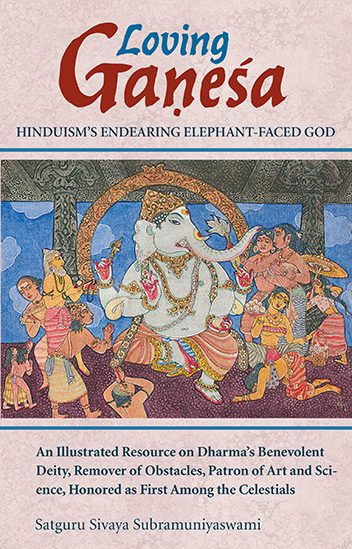Loving Ganesha Audiobook Released

We are pleased to announce that the Loving Ganesha audiobook made with Gurudeva’s voice cloned by AI is now available here.
Here is the introduction to the book–
Loving Ganesha Audiobook Released Read More »

We are pleased to announce that the Loving Ganesha audiobook made with Gurudeva’s voice cloned by AI is now available here.
Here is the introduction to the book–
Loving Ganesha Audiobook Released Read More »
For decades we’ve been using “Big Max” small storage sheds to hold many construction, maintenance and repair supplies such as plumbing parts, electrical parts, etc. The sheds served a good purpose, but are inherently flimsy and more susceptible to corrosive elements than a actual building. Now that we have the new Hale Hana metal building, the Siddhidata kulam is gradually moving supplies into secure, better-protected storage space created above the welding station. They are fashioning shelves with unusually-thick plywood that was gifted to us by a local contractor.
Across the room they also recently installed safety poles and ropes along the storage space up there.
After capturing these few photos, we saw taskforcer Aran Malhotra weeding next to the “Tiki” sculpture outside Hale Hana entrance.
Efficient Use of Space for More Storage Read More »
A few days ago we enjoyed the monthly Gurudeva Chitra Puja, attended this time by some sishya pilgrims from Mauritius, Singapore and Malaysia and mainland USA.
In 2001, Gurudeva spoke about diplomacy, keeping the pranas flowing in a positive way by being careful about what to share with others, also knowing what areas are best not to be talked about at all: unsolvable problems. Keeping the prana between people flowing positively by being careful not to use words that create entanglement.–
The Kadavul Temple re-roofing is proceeding apace. They have completely covered one side with new plywood and tar paper, and are halfway through the other side.
A Hindu man with a fruit farm on the dry west side of Kauai has been gifting us boxes of huge mangos in season.
Miscellaneous Updates Read More »
After protecting Kadavul Temple’s wooden roof from the elements for about 40 years, it’s finally time to remove the monier tiles, which had begun to crack here and there, causing some water damage underneath. They will be replaced with shingle tiles after conducting any necessary repairs of the wood ceiling beams underneath and placing a new layer of thick plywood and tar paper. As can be imagined, this project causes quite a disruption to the flow of visitors who normally attend puja and mill about throughout the mornings. To be fully on the safe side, we have shut down public access to the temple and surrounding area for the duration of the project.
Yesterday was the first day of work for the contracted team. The first photo shows how much tile they have removed from one side (under the blue tarp). The job is estimated to last a couple weeks or longer, pending discovery of needed repairs or weather issues. Just today, it rained a fair amount (needed by plants after a dry spell), so the workers can only resume when that stops.
Kadavul Temple Reroofing Begins Read More »
In this upadesha, Satguru shares the second half of Gurudeva’s profound description of the fifth dimension, which relates to the vishuddha chakra. “If we strew clothing from room to room, that disorder is always nagging awareness, bringing us too far out into external consciousness and plunging us into the mire of ‘I should haves’ and ‘Well, it really doesn’t matter.’ Till the outer dimensions are ordered and stabilized in crystal clear patterns of daily life, we never go deep. The foundation must be built first, and it must be strong. It is not advisable to overlook the importance of the most basic and ordinary daily chores and activities. No one wants to build the rest of the house, only to have to take it down later to repair weaknesses in the foundation.”
Fifth Dimension, the Mind of Light, Part Two Read More »
In this upadesha, Satguru picks up from where he left off last week which was sharing about the fourth dimension in depth. Today he begins exploring Gurudeva’s profound description of the fifth dimension, which relates to the vishuddha chakra. “The perspective that all is well in the world, the experience that everything is as it should be, perfect right now, is of the fifth dimension. In this state we realize a great bliss, a comprehensive, all-encompassing acceptance of the universe as it is, which reveals that the whole of existence is working proportionately one with another.”
Fifth Dimension, the Mind of Light, Part One Read More »